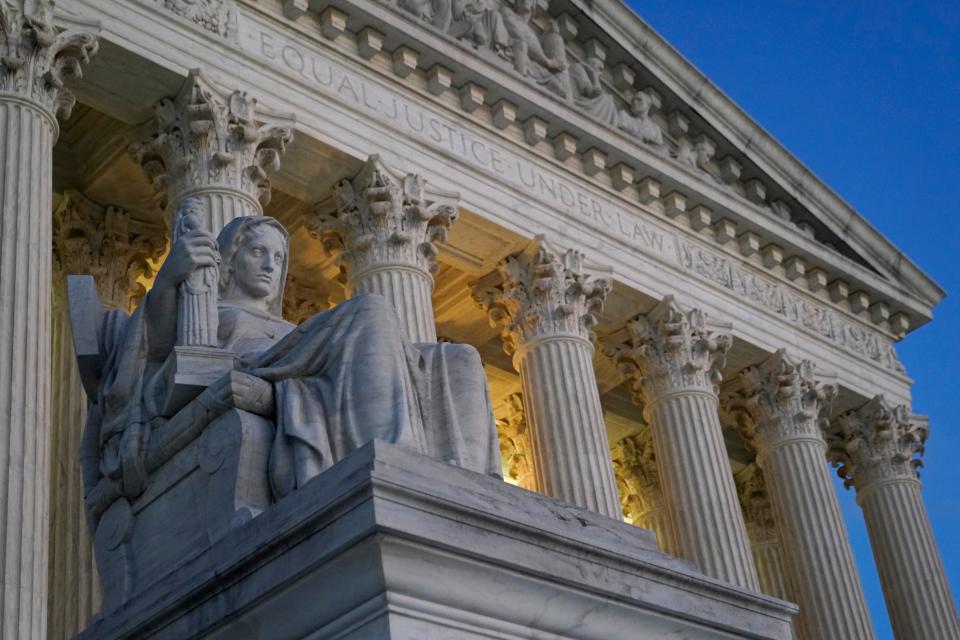Why the Supreme Court is paring back your rights (and will keep doing so for years)
A revolution is underway in America. It’s being led by the Supreme Court of the United States.
Last month’s ruling striking down affirmative action in university admissions is consistent with the playbook established by the court’s supermajority at the same time last year.
Headlined by the Dobbs ruling that overturned nearly 50 years of precedent established by Roe v. Wade, that court’s gang of six also advanced its agendas in the areas of voting rights, gun ownership and religious (i.e., Christian) liberty.
As noted by one national journalist, these rulings illustrate “that the court’s conservative majority continues to move at a brisk pace to upend decades of jurisprudence and redefine aspects of American life on contentious issues.”
In short, what’s happening is revolutionary.
Rulings once expanded rights, liberties
The revolution has been 50 years in the making.
It’s succeeding in returning the nation to an era prior to the liberties that the court established in the 1950s and 1960s. Contrary to many contemporary rulings, those were intended to expand rights and opportunities for all Americans.
That is, the court was living up to the inscription on the outside of its building — Equal Justice Under Law.
Now, equality is on the minds of the Supreme Court’s majority only to the extent of denying it. Rather than simply preserving a status quo, however, they want to turn back the clock.
Denying opportunities — such as those to attend college or to vote in elections — can help to stem the tide of the nation’s transformation to majority minority and to retain white power.
Change the court, then change the nation

As noted, this revolution didn’t happen overnight. Its leaders determined that changing the nation wouldn’t happen by changing law legislatively.
Instead, the focus was placed on the courts, especially the Supreme Court where only five votes are needed to win. The long game was played to populate the court with conservatives loyal to the cause.
Combine that with underhanded tactics in recent years to get the “right” people seated (see the nomination cases of both Merrick Garland and Amy Coney Barrett), we have the long-desired supermajority that’s turning the country upside down.
At the heart of this transformation of court and country lies an often-overlooked concept: worldview.
We all have a worldview. The kind we have determines who we are, what we believe and what we value.
If you’ve ever wondered if someone else lives in a world different than the one you inhabit, it’s likely because of your opposing worldviews.
This transformation is driven by worldview
Fear is the primary driver of worldview.
Those with a fixed worldview prioritize safety and predictability. Thus, they want to preserve the status quo or even turn back the clock. The known is preferable to the unknown, with great effort made to keep things predictable.
We might think of these people as conservative.
Those with a fluid worldview tend to be progressive. Because they are less fearful of the unknown, they like trying new things. Unlike their fixed counterparts, they are less wary of change, including the nation’s changing demographic landscape.
Worldview is at the root of not only a divided nation, but also a divided Supreme Court. Like all of us, its justices each have a worldview.
Affirmative action ruling: Could limit education, Native students say
The court’s revolution is one of a fixed worldview. Fear of the future is winning. The remedy, according to the supermajority, is returning to a period prior to the onset of progressivism and equal opportunity.
In the Supreme Court’s recent high-profile rulings — all with the same 6-to-3 breakdown — worldview is prominent.
Expect more Supreme Court rulings like these
Last month’s upending of college admissions affirmative action is no exception.
Justice Ketanji Brown Jackson eviscerated the majority and its narrow, fixed approach. She wrote the majority’s “let-them-eat cake obliviousness” announced “colorblindness for all.”
But, she added, “deeming race irrelevant in law does not make it so in life.”
Therein lies the core of this issue: A court majority that declares new law based on a self-proclaimed new reality, overturning decades of practice but, as Justice Jackson wrote, doing so “without any basis in law, history, logic, or justice.”
On the other hand, like most, the court’s minority recognizes that Americans’ lives do not exist in the abstract — for example, in an ideal world in which racism and its vestiges have vanished.
Real world issues demand a fluid worldview that a fixed worldview discourages.
Justice Jackson continued by stating the obvious: The Supreme Court’s supermajority has “detached itself from this country’s actual past and present experiences.”
The unfortunate reality is that in a field in which evidence is key, there is little to suggest that these revolutionary practices designed to return the nation to a period of unequal justice under law will change anytime soon.
Joseph Russomanno is a professor at ASU's Walter Cronkite School of Journalism and Mass Communication and author of "The 'Stench' of Politics: Polarization and Worldview on the Supreme Court." Reach him at russo@asu.edu.
This article originally appeared on Arizona Republic: Supreme Court is paring back your rights (and this just the start)

